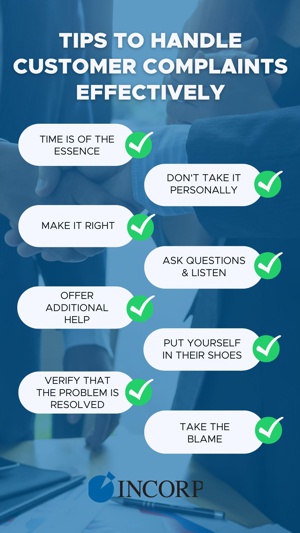Stay in the know!
Join our newsletter for special offers.
No matter how hard you try, you can't please every customer every time. Products get damaged in shipping, technicians arrive late, and paperwork gets lost. The question is, how do you handle someone who calls to complain?
Following a few simple rules may help you minimize the damage when something goes wrong, and you may even find that handling complaints the right way can turn a negative experience into a positive one. A customer who's prepared to battle over a problem may be so pleasantly surprised at your willingness to fix it immediately without arguing, that he or she ends up becoming a loyal customer and spreading the word about your great customer service.
Even though you're the one getting yelled at, the customer isn't attacking you personally. They're just frustrated at the problem they're experiencing. Staying calm may help defuse an emotional situation.
Before jumping right in, ask questions to make sure you have complete information. Then let the customer tell you exactly what happened, without interrupting. You may be in a hurry, but taking a few minutes to make sure you understand completely, and assuring the customer that they have your undivided attention, will pay off in the long run.
We've all had bad experiences with products or services, and been frustrated with being put on hold or having our concerns minimized. Try to recall how you felt at those times and have some empathy for the exasperated customer.
Yes, maybe the computers went down or the problem was caused by someone in another department. You probably have lots of very good reasons why the customer's complaint is not your fault. But the fact remains they don't care about excuses — they just want solutions. Apologize sincerely and move on.
Address the problem immediately if at all possible. This not only demonstrates that your company is capable of acting efficiently, but it also shows that you know the customer's time is valuable. If you must put someone on hold or transfer their call, explain why you're doing it so they know they're not just being shoved aside.
If your customer is unhappy with a product, offer to replace it at no charge, and pay for return shipping. If they feel they didn't get good service, refund their money. It's cheaper in the long run to make customers happy so they'll keep coming back than it is to lose their business and have to spend money on marketing and advertising to find new customers.
Once the immediate issue has been resolved, be sure to ask if the customer has any other problems or questions. This tells them that you're really concerned about their experience.
Follow up with a call or email confirming the results of your interaction: "The replacement part is being shipped on Monday," or "You'll receive a refund in full within two weeks" — whatever the case may be.
Bottom line: Customer complaints can be a source of valuable feedback on your products, services, and processes, so make sure to document your interactions with customers. If you're constantly getting calls about a faulty widget, it may be time to re-tool it. If your products are arriving damaged, change your packing procedures or your shipping company. Use the information from customer complaints to make improvements that will ensure a better customer experience in the future.
Join our newsletter for special offers.
